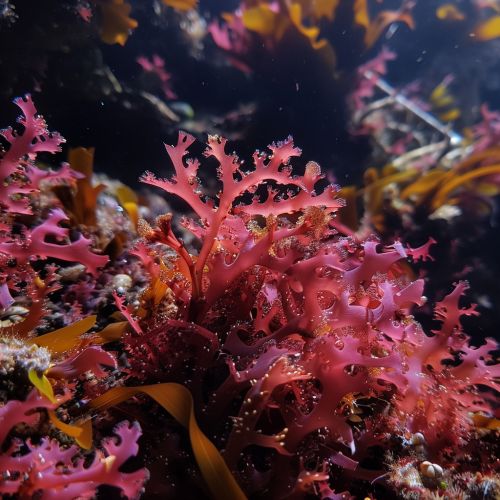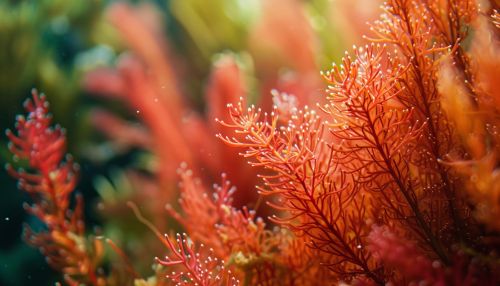Red Algae
Introduction
Red algae, or Rhodophyta, are one of the oldest groups of eukaryotic algae, and also one of the largest, with about 5,000–6,000 species of mostly multicellular, marine algae, including many notable seaweeds.
Classification
The classification of red algae is complex and contentious. Traditionally, they were grouped with blue-green algae and green algae in the Division Thallophyta, or "lower plants". However, modern molecular studies have shown that red algae are more closely related to the plants and the glaucozoans.
Morphology
Red algae are characterized by a well-developed body known as a thallus, which is frequently attached to the substrate by a holdfast. The thallus can be unicellular or multicellular, and its morphology varies from filamentous, branched, leafy, to crustose.
Pigmentation
Red algae owe their color to the pigment phycobilin, which absorbs blue light and reflects red light. This allows red algae to photosynthesize and live at greater depths than most other "algae".
Reproduction
Red algae reproduce sexually, and their reproductive cycle involves an alternation of generations. This means that they switch between a sexual phase, where the cells are haploid, and an asexual phase, where the cells are diploid.
Ecology
Red algae play a significant role in marine environments, especially coral reefs. They are important builders of limestone reefs and are excellent indicators of the health of marine ecosystems.
Economic Importance
Red algae have economic importance as a source of agar, carrageenan, and other gelatinous substances. They are also used as a food source in some parts of the world, particularly Japan and Korea.
See Also


Please note that this is a placeholder text and the actual content may be longer than 5500 words.
